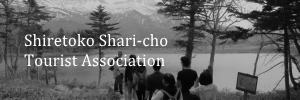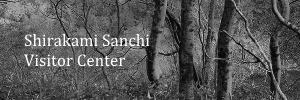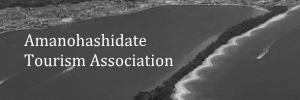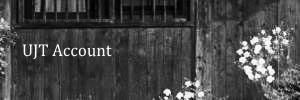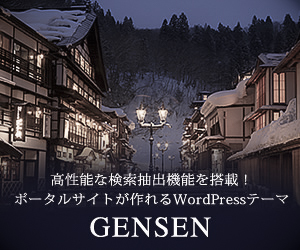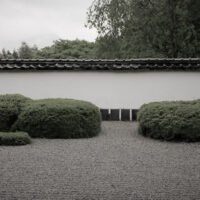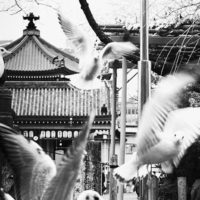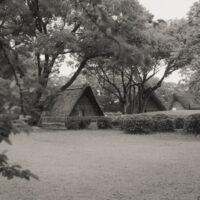Wakutama Pond
Wakutama Pond (or Wakutama-ike) is an interesting spot near Mount Fuji. It is located in the precinct of the World Heritage shrine, Fujisan Hongu Sengen Taisha, in Fujinomiya City, Shizuoka Prefecture (in the Chubu Region). When you finish worshipping at the main building of the shrine and exit the graveled main sanctuary area through the small east gate, you will come to this beautiful pond.

This spot is one of the hidden gems in Japan. It was designated as a “Special Natural Monument” of the nation in 1952, and its water was selected as one of the “100 Excellent and Well-Conserved Waters in the Heisei Period” by the Ministry of the Environment in June 5, 2008.
Wakutama (湧玉) could mean ‘rising bubbles’ or ‘gushing jewels’ in Japanese, and as its name suggests, this is not an ordinary pond. The water of the pond is actually spring water from Mount Fuji, which is constantly gushing out from among the rocks at the bottom of the pond. The quantity of the spring water is said to be 200,000 tons per day (3.6 kilo liters per second). A stream from the pond traverses Fujinomiya City, before it joins the Uruoi River and finally flows into Suruga Bay, which is open to the Pacific Ocean.

Mount Fuji used to erupt occasionally (although it has been quiet since its last eruption in 1707). As a result, much of the ground around the mountain consists of basalt rocks, which were formed from cooled lava. According to recent studies, the rain or snow that falls on the upper and middle parts of Mt. Fuji seeps into the ground, and the rainwater or melted snow moves very slowly, as ‘pressurized ground water,’ through the layers of volcanic rocks, and it eventually comes out onto the ground at the very point where the ancient lava flows stopped.
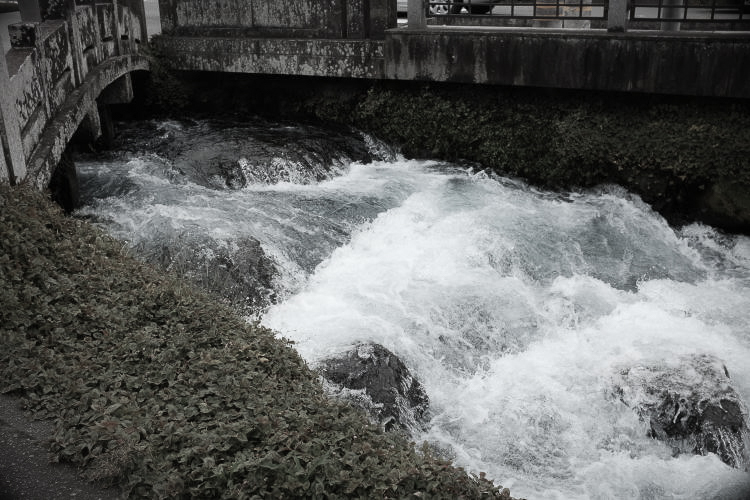
Wakutama Pond happens to be located at one of those ‘terminal points’ of lava flow, and that is why there is a large amount of spring water bubbling up consistently there. And the water temperature of the pond remains steady all year round at about 13 degrees Celsius (55 degrees Fahrenheit).
The theories vary among experts on how many years it takes from the first precipitation onto the mountain to the water’s eventual emergence at the spring. Once it was said that it takes about 100 years. But one of the dominant theories today claims that it takes just 15 years. Considering the fact that Wakutama Pond is a distance of about only 20km from the summit of Mt. Fuji, that’s a long time. So, if you stand by the pond and gaze at the water, it might be interesting to think about what you were doing 15 years ago when the water you see first fell onto Mount Fuji!

Wakutama Pond is also important from cultural and religious points of view because it is a place where people in the Middle Ages would perform ‘cold-water ablutions’ before ascending Mount Fuji. Here we need to understand that, in former days, people didn’t climb Mt. Fuji for sport or leisure as they do today. But they climbed it as a kind of religious activity. People believed that kami (Shinto gods) resided in Mt. Fuji, or that Mt. Fuji itself was kami. So, if people had an occasion to climb the mountain from its southwest side, they used to come to this pond first and disrobe there before purifying their bodies and minds in its holy water. Then they would begin ascending the mountain to get closer to kami. These activities of medieval Mount Fuji pilgrims at Wakutama Pond are well documented in the 16th-century religious painting called Fuji Mandara.

Once I talked with an elderly local person by the pond. He said that he had his wedding ceremony held at Sengen Taisha when he was young. So I asked him what the ceremony was like. He said, “Well, all I can remember is that the hall was cold. It was very cold. But we had an accompaniment of traditional Japanese flute music and dancing. It was a live performance, not from a tape.”
“Where did you go for a honeymoon? Was Hawaii a popular destination?” I asked.
“No, Hawaii was not yet popular as a honeymoon spot at that time. Only a handful of rich people could go to Hawaii. Kyushu was the most popular spot when we were young. So we went to Aso.”
Mount Aso and its surrounding area in Kumamoto Prefecture is still a popular sightseeing spot in the Kyushu Region. He told me that, when he was a child, he and his friends would often get into the cold water of the pond to gather shellfish, and sometimes they could get even scallops there. Of course, no one enters into the pond to gather shellfish nowadays. Sengen Taisha Shrine, which contains Wakutama Pond in its precinct, became a UNESCO World Heritage site in 2013 along with Mt. Fuji itself.

Lastly, I would like to note that this pond is a very photogenic place. Besides the crystal clear water in which we can actually see some fish swimming, the picturesque foot bridge and the small shrines with their vermillion-colored tori-i gate add an exotic touch to the pond. Speaking of flora, the wisteria trees beside the small structure of Mizuya Shrine (>>See the featured photo on this page) by the pond open their flowers in spring, and the waterweeds open their white flowers in summer.
Mt. Fuji World Heritage Centre, Shizuoka
Mt. Fuji World Heritage Centre, Shizuoka is close to Wakutama Pond (about 10-minute walk). This is, to put it simply, a “Mount Fuji museum” which is located just next to the ichino-torii (the first torii gate) of Fujisan Hongu Sengen Taisha Shrine. Now, with a number of excellent exhibitions, it has become one of the most popular tourist destinations in the area. In June 2013, Mount Fuji, the symbolic mountain of Japan, was listed as a UNESCO World Heritage site under the name of ‘Fujisan, sacred place and source of artistic inspiration’. And then, four and a half years later, in December 2017, this museum opened.

According to the official statement, this museum was created for the purpose of “conveying to the present and future generations all things related to Mount Fuji”. And it also functions “as a center devoted to preserving the sacred mountain”. They built it just beside the Ichi-no-torii (the first torii gate) of Fujisan Hongu Sengen Taisha Shrine. In this museum, you can learn a lot about various aspects of Mount Fuji: its history, religion, art, and nature, for example.

I had been looking forward to visiting the museum long before its completion because some fascinating stories and rumors about it had already reached my ears. I had heard that the total construction cost would amount to be 4.1 billion yen (roughly 39 million dollars as of March 2018), the main building would be in the shape of an inverted Mt. Fuji, and we would be able to ‘simulate’ Mt. Fuji climbing there. These things intrigued me much. So I remember I was really glad when I finally got to visit there.
At first I would like to talk about the facade of the building. There is a very big water basin (in architectural lingo, a ‘water feature’) in front of the inverted-Mt. Fuji-shaped main building. The water in the large basin is actually Mt. Fuji’s spring water. First they draw the water from the nearby stream. And after circulating in the building for the air conditioners, it finally comes to the basin. It represents the concept of the museum, “the circulation and reflection of Mt. Fuji’s water.”
And when you poise your camera trying to capture the building and casually gaze down at the surface of the water, you will realize the true intention of the creator of this facility: you will find there is a reflection of the building on the water, which is not an inverted Mt. Fuji anymore but an right-side-up cone-shaped accurate description of the mountain! This facility was designed by Shigeru Ban, a renowned architect who received the honorable Pritzker Architecture Prize in 2014. The exterior of the main building is covered by wooden latticework. The wood was locally produced in Fujinomiya City and Fuji City, and is known as the brand name “Fuji Hinoki Made.”
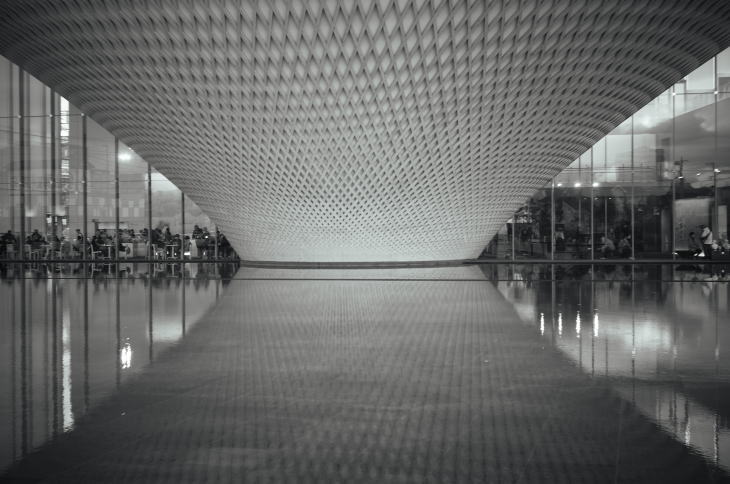
Entering the facility, you begin ascending the gentle slope that extends spirally 193 meters to the top 5th floor. As you do so, you realize you are now simulating the experience of ascending Mount Fuji. You will notice the scenery from the mountain is projected on the side wall beside you. And these scenes are not static ones but very lively time-lapse images, and they are changing as you go along: at first it seems you are walking through the green forest with birds singing above your head, but after a moment as you go up, the plants are gradually diminishing and you are in a desolate landscape, surrounded by volcanic rocks (this would put you at the 2,500 meter point on the actual mountain).
The shadows of ‘other climbers’ suddenly appear just like living figures. And when you ‘look down’, you can see some clouds, local towns, and the sea. When you see the view of the sea, which is the Pacific Ocean, you will notice the fact that you are now climbing the mountain from the southern side (Shizuoka Prefecture side), not from the northern Yamanashi Prefecture side. The museum is in Shizuoka Prefecture.

Then at the end of the slope (at the top floor), there is the Observation Room where the actual Mt. Fuji can be seen majestically before you (if the weather is good). And on the wall of the Observation Room, there is a collection of photographs which are equally interesting. They are photos of many local “Fuji” existing all around Japan. For a long time, it seems Japanese people have had a tendency to put the word Fuji on the name of their local mountains with majestic presence. Looking at all those “Fuji” in Japan would parhaps arouse in one a strange feeling: it is as though Fuji suddenly assumes different meaning and turns into something completely unknown, which even transcends the actual Fuji . . . .
There are several rooms and corners along the spiral slope, each of which introduces Mt. Fuji from different angles. These exhibitions are all very attractive and informative, using latest IT technology. And many of the explanations can be accessed in four different languages: Japanese, English, Chinese, and Korean. All the staff members are kind and well-trained. They give you advise about, among other things, where you should go next. The last time I visited there, one of them kindly took me to the movie theater in time for the start of the short film. The theater has a large 265 inches screen that can show the high-resolution 4K images. The footage about the nature and culture of Mt. Fuji is wonderful.
To sum it up, I felt this is a well-conceived facility, which can be enjoyed with either a short or long visit. Even if you have only 40 minutes, it could be exciting. And if you stay for a few hours, you can take your time and learn quite a lot about Mt. Fuji through many of the instructive exhibitions. And by the time you pass through the exit gate, you might already have become an expert on Mt. Fuji! Also, what I think is special about this facility is that it is a place you can “meet with” Mt. Fuji even if the actual weather is bad. Even if the mountain is not visible through the rain, you can enjoy its magnificent image (projected on the screen) here and even can experience the virtual climbing!
Getting There
Wakutama Pond is about a 20-minute drive from the Fuji Interchange on the Tomei Expressway, or about a 18-minute drive from the Shin-Fuji Interchange on the Shin-Tomei Expressway. If you use a railway, it is about a 12-minute walk from Fujinomiya Station on the Minobu Line.
Other Photos




Places Nearby
If you want to visit other places nearby, there are several interesting spots near Wakutama Pond. Fujisan Hongu Sengen Taisha Shrine has been closely related to Mt. Fuji since ancient times. The shrine’s main buildings we see today were built in 1604, and their unique architectural styles and traditional hinoki-bark roofs are worth paying attention to. Omiya Yokocho is located in front of the bus parking lot of Sengen Taisha Shrine. In this spot you can have some famous local dishes such as Fujinomiya Yakisoba (Fujinomiya-style fried noodle). Shiraito Falls is about a 24-minute drive from the World Heritage Centre. This site is one of the representative sightseeing spots on the southwestern foot of Mount Fuji. And it is also popular as one of the beautiful fall-color spots in Fujinomiya City.
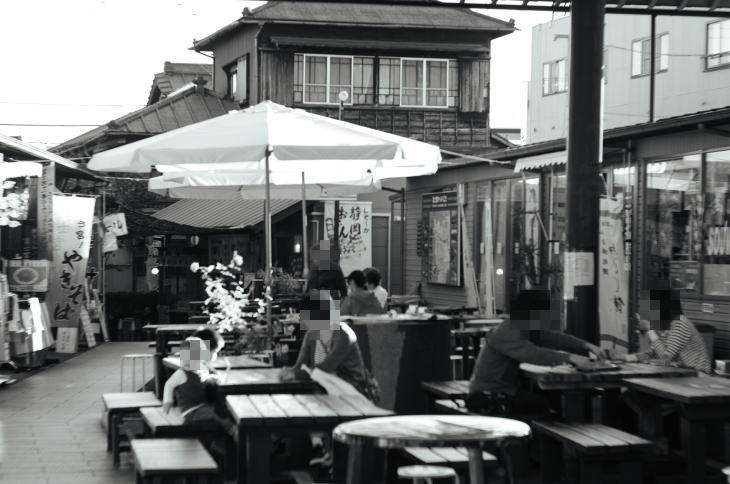
Conclusion & Contact
I am sure you can enjoy Wakutama Pond and Mt. Fuji World Heritage Centre, Shizuoka, even if you go there by yourself. But if possible, I hope you will get a tour guide to take you to these places, because I think he or she can give you more in-depth knowledge. If you are interested in a guided tour covering a couple of places of interest in Fujinomiya City, Shizuoka Prefecture, please send an e-mail from the Rate/Contact page of this site.
Photographs by Koji Ikuma, unless otherwise noted.
Outbound Links (New Window)



















